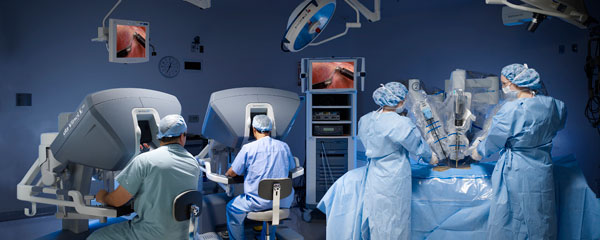
vNotes & daVinci
If surgery is necessary, you may have several minimally invasive options to consider, such as vNotes and the da Vinci System. With the da Vinci System, Dr. Kafali-Nazarof performs surgery through a few small incisions, utilizing advancements in surgical and robotic technologies. The surgeon remains 100% in control of the da Vinci System throughout the procedure. Alternatively, with vNotes, Dr. Perry can access the pelvic cavity without any external incisions, avoiding even the smallest abdominal cuts, which further reduces scarring, pain, and recovery time.

